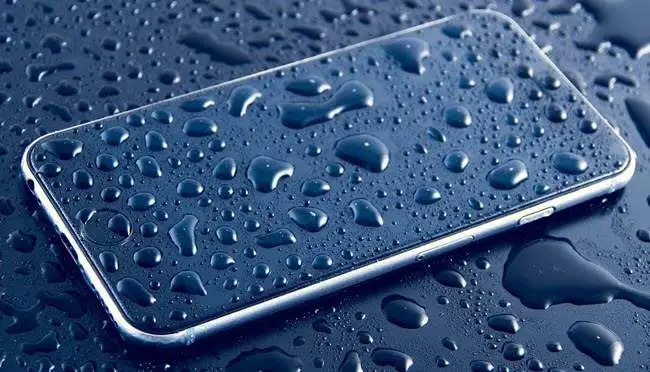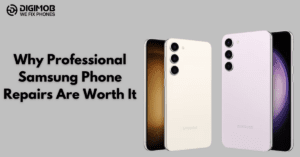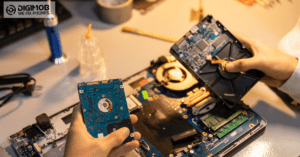Introduction:
Water damage is a common concern for smartphone users, and it can occur in various ways, including accidental immersion, exposure to moisture, or even high-humidity environments. When water gets inside your phone’s screen, it can cause display issues such as discoloration, flickering, or unresponsive touch functionality. Prompt action is essential to minimize the risk of long-term damage and restore your phone’s usability. In this guide, we’ll explore effective methods and techniques for removing water inside your phone screen, helping you salvage your device and prevent further complications.

Understanding the Impact of Water Inside the Screen: Water entering your phone’s screen can interfere with the delicate electronics and components responsible for displaying images and processing touch input. Even small amounts of moisture can cause short circuits, corrosion, and other damage if left untreated. It’s crucial to address water inside the screen promptly to prevent irreversible harm and ensure the continued functionality of your device.
Common Causes of Water Inside the Screen:
- Accidental Submersion: Dropping your phone in water, such as a sink, toilet, pool, or bathtub, can lead to water entering the screen.
- Exposure to Moisture: Moisture from rain, condensation, or high humidity environments can seep into the phone’s screen over time, especially if the device lacks adequate water resistance.
- Liquid Spills: Accidental spills of liquids such as water, juice, or coffee onto the phone’s screen can introduce moisture and potentially cause damage.
Now, let’s explore the steps to remove water inside your phone screen effectively:
- Power Off Your Phone:
- If your phone’s screen has water inside it, immediately power off the device to prevent electrical shorts and further damage.
- Do not attempt to use the phone or turn on the screen while water is present, as this can exacerbate the issue and increase the risk of internal damage.
- Remove External Moisture:
- Wipe the exterior of the phone with a clean, dry cloth to remove any visible moisture or water droplets.
- Pay particular attention to the area around the screen edges and ports, where water may have entered the device.
- Place the Phone in a Dry Environment:
- Place the phone in a dry environment with low humidity to facilitate the evaporation of water trapped inside the screen.
- Avoid placing the phone near sources of heat, such as radiators, ovens, or direct sunlight, as excessive heat can damage the phone’s components.
- Use Silica Gel Packs:
- Silica gel packs, often found in packaging for electronic devices, are highly effective at absorbing moisture.
- Place the phone in a sealed container or bag along with several silica gel packs to accelerate the drying process.
- Leave the phone in the container for at least 24-48 hours to allow the silica gel packs to absorb the moisture trapped inside the screen.
- Rice Method:
- While not as effective as silica gel packs, uncooked rice can also help absorb moisture from inside the phone’s screen.
- Place the phone in a sealed container or bag filled with uncooked rice and leave it for 24-48 hours.
- Rice can help draw out moisture, but it may not be as efficient or reliable as silica gel packs.
- Vacuum Seal Bag:
- If you have access to a vacuum seal bag or vacuum sealer, you can create a vacuum environment to expedite the drying process.
- Place the phone in a vacuum seal bag and remove the air using a vacuum sealer, creating a vacuum environment that encourages moisture evaporation.
- Leave the phone sealed in the vacuum bag for 24-48 hours to allow the moisture to dissipate.
- Professional Repair Services:
- If water damage is severe or if DIY methods are unsuccessful in removing water from inside the phone screen, consider seeking professional repair services.
- Professional technicians have specialized tools and equipment to safely disassemble the phone, remove moisture, and assess and repair any internal damage.
- Contact reputable repair shops or authorized service centers to inquire about water damage repair options and pricing.
Preventive Measures to Avoid Water Damage:
- Use a protective case: Invest in a quality phone case that provides water resistance and shock absorption to protect your device from accidental drops and spills.
- Avoid exposure to water: Be cautious when using your phone near water sources such as sinks, pools, or bathrooms, and consider using a waterproof pouch or case for added protection.
- Apply a screen protector: Apply a tempered glass or waterproof screen protector to your phone’s screen to create an additional barrier against moisture and water intrusion.
- Regular maintenance: Routinely inspect your phone for signs of damage or wear, and promptly address any issues to prevent water ingress and prolong the lifespan of your device.
Revive your phone’s vitality with our expert mobile repair services! ????✨ Visit our website www.digimob.com.au to learn more and schedule your appointment today!

Conclusion:
Water inside your phone’s screen can pose a significant risk to the device’s functionality and longevity if not addressed promptly and effectively. By following the steps outlined in this guide, including powering off the device, removing external moisture, and employing drying methods such as silica gel packs, rice, or vacuum sealing, you can increase the likelihood of successfully removing water from inside the screen. Additionally, taking preventive measures such as using a protective case, avoiding exposure to water, and applying a screen protector can help reduce the risk of water damage in the future. If DIY methods are unsuccessful or if water damage is severe, consider seeking professional repair services to assess and address the issue. By taking proactive steps to remove water from inside your phone’s screen and prevent future water damage, you can protect your device and ensure continued functionality and usability for years to come.



